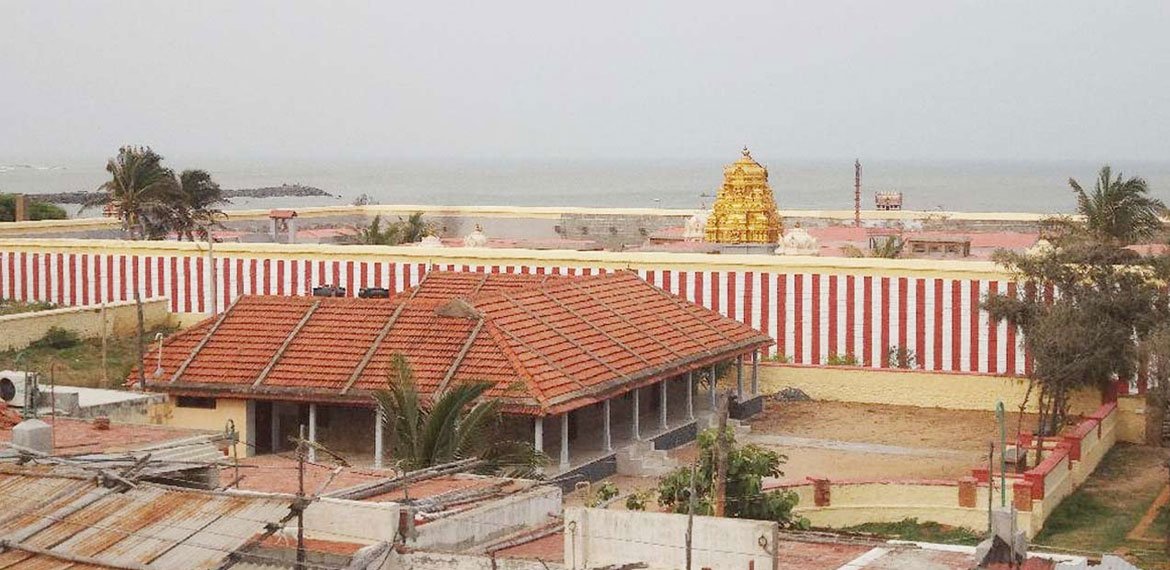Kanyakumari Amman Temple

Bhagavathi Amman Temple:
Devi Kanyakumari is Shree Bhagavathy in the shape of an adolescent female child. Devi is also called Shree Baala Bhadra or Shree Baala. Devotees also revere her as Shree Bhadrakali.
This Kanyakumari Temple, dedicated to the virgin Goddess Devi Kanyakumari, is located on the beachfront of Kanyakumari in Tamil Nadu, India's southernmost state, and overlooks the sea. The name 'Kanyakumari' is derived from the words 'Kanya' meaning 'Virgin' and 'Kumari' meaning 'Girl'.
Kanyakumari and its surrounds are thought to be part of the territory created by Parasurama, a manifestation of Lord Vishnu. Kanyakumari is mentioned in folklore and mythology.
In legend, there are many wars between Devas and Asuras, and the Devas eventually win. It represents the triumph of good over evil.
Banasura (Grandson of Mahabahali), the demon ruler, prostrated to Lord Brahma. When Banasura requested immortality, Brahma stated his unwillingness to provide it, but did him the choice of choosing his own manner of death. Banasura hoped that if he had to die, it be at the hands of a virgin. Brahma granted the boon.
With this boon, Banasura began to torment the Devas while torturing the saints and rishis. Unable to withstand the torment, they turned to Mother Earth, who requested assistance from Her consort Lord Vishnu, the Universe's guardian.
On the Lord's behest, the Devas prayed to Parasakthi, who was the only one capable of destroying Banasura. The Devas conducted an extremely powerful Yagna, which pleased the Goddess greatly. She pledged to destroy Banasura. As ordered, Parasakthi reincarnated as Devi Kumari. It is a well-known legendary fact that whatever rebirth she took, she would perform penance in order to reconcile with her spouse Lord Shiva through marriage.
Hence Kumari performed penance so that she may marry Lord Shiva. Shiva, pleased and thrilled, announced his desire to marry her. This was made known to Kumari. Narada, who took on this responsibility, set aside a specific time for marriage before morning and ordered that the auspicious time not be missed. Kumari's home was decorated lavishly to commemorate the wedding.
The Lord Shiva was residing in Suchindrum. The bridegroom's party began in Suchindrum well in advance, with pomp and ceremony. Meanwhile, Narada was pushed by the Devas to do anything to halt the marriage, for once the marriage was finished, Kumari could not be a virgin, and Banasura could not be killed because he could only be killed by a virgin.
Narada devised a scheme, adopted the form of a rooster, and waited at Vazhukkamparai. When the wedding party arrived at that location on their route to Kanyakumari, Narada exclaimed aloud. When Lord Shiva and his party heard this, they assumed it was dawn and that the fortunate hour had passed. They returned to Suchindrum, disheartened.
Meanwhile, Devi Kanyakumari, dressed for the occasion in bridal magnificence, awaited the approach of Lord Shiva and his wedding party. The unhappy Bride Kumari pledged to remain a virgin after the bridegroom's party failed to arrive. She then spread all of the food goods saved for marriage, which changed into sand and pebbles that resembled rice and other items.This catastrophe is responsible for the multicolored sand observed along the Kanyakumari seashore.
Banasura, hearing of Kumari's beauty and not knowing who she was, wanted to marry her. Kumari flatly rejected his idea. Banasura determined to gain her by force. A furious battle erupted in Mahadhanapuram (about 4 kilometers from Kanyakumari), and in the end, the Goddess Kanyakumari utilized her Chakrayudha (Discus weapon) to defeat Banasura.
All the Devas were thrilled and chanted songs to Devi Kanyakumari. Devi then began her penance and remained a virgin, and she continues to practice austerities to this day in the hope that he may one day join her.



